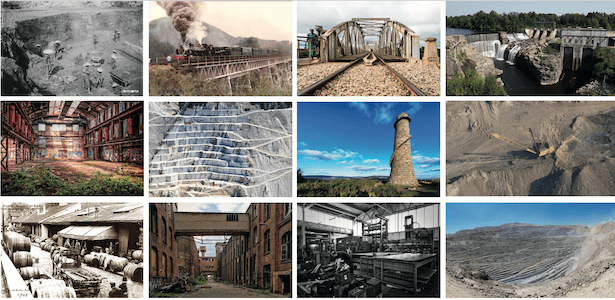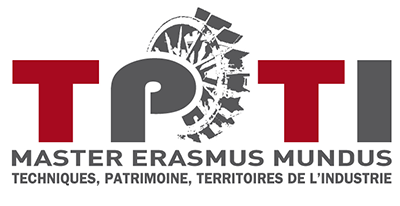Nouvelles frontières du patrimoine industriel
12e workshop international TPTI
29 septembre 2021, Paris

In recent years, the horizons of industrial heritage have expanded considerably, both in terms of sectors and methodological approaches. As far as sectoral expansion is concerned, it is difficult to report on the numerous research projects that reflect the strong interest of researchers and experts in new industrial production sectors. Examples include the work of Icomos Germany (International Council on Monuments and Sites) on the nuclear and aerospace industries, the thematic studies of Ticcih (The International Committee for the Conservation of Industrial Heritage) on the water and oil industries, and the monographic "Patrimoine Industriel" issue of Cilac magazine, dedicated to an initial history of the computer industry. The time dilation of what is still known today as "industrial archaeology" does not only concern those sectors at the forefront of industrial production that have recently begun to arouse interest in the field of industrial heritage.
An equally important focus is emerging on the origins of industrial production, with research documenting the importance of the dense fabric of proto-industrial activities, linked to traditional production, which, alongside ante-litteram "big businesses" such as many mines and arsenals, formed the antecedents and fertile ground for the development of modern industrial activities. Shipyards, mines, forges, paper mills, textile factories, tanneries, wheat mills, factories and workshops working on a variety of products preceded the advent of modern, integrated and mechanized industry. The same can be said for the use of clean energy sources in the first and second industrial revolutions: coke, steam, fossil fuels and electricity. Without underestimating the fundamental role of technological innovation, we must not lose sight of the fact that phenomena that highlight factors of continuity (adaptation, gradualism, incrementalism, etc.) are just as important as the phenomena of rupture and "creative destruction" evoked by Schumpeter. The very notion of the "industrial revolution" has recently been the subject of new interpretations, which recognize the extent to which its distinctive features are more the result of the evolution and long coexistence of different modes of production, than of radical ruptures of previous ones.
Another aspect of the broadening of the horizons of the phenomena studied concerns the consolidation of a "sector vision" of industrial progress from the perspective of business history. Until now, the concept of industrial heritage has focused on production in the strictest sense of the term: production sites, infrastructures for the supply of raw materials, installations for the production of the energy needed to run workshops, housing for the workforce used in production. In the new vision of the value chain, the idea of heritage extends in two directions. The first concerns the circulation and distribution of an industrial product manufactured for sale and consumption: It's no coincidence that some of the most recent examples of industrial heritage enhancement include historically significant logistics facilities: Albert Dock in Liverpool, Castlefield in Manchester, Speicherstadt in Hamburg, Magazzino 29 in Trieste's Porto Vecchio. The next link in the chain is distribution, in particular modern mass retailing, which today is the focus of intense research into the complex evolution of its organizational forms, from the first department stores (Galeries Lafayette, Bon-Marché, Printemps) to today's shopping malls (which find their prototype in Chicago's Northland Center, designed by Victor Gruen in 1954).
The other sector which has not yet been fully explored is that of the environment. An increasing number of experts see in the present epoch a new geological era characterized by the omnipresent and destabilizing action of a factor that in previous epochs had not played such an important role: human action. The beginning of this new era – which has been named Anthropocene – could be dated to the second half of the 20th century and the cumulative effects of the industrial revolution on ecosystems and the environment in general would be largely responsible. A non-partial heritage view of the industry must include in its list of testimonies those that provide documentation of environmental alterations of past industrial activities. Alongside this “negative patrimonialization”, the positive effects of industrial patrimonialization resulting from the reuse of disused sites and facilities should be analysed with equal attention, and the resulting savings in energy use and land use compared to demolition and reconstruction practices.
PROGRAM
Session 1.
Président de séance, Giovanni Luigi Fontana (Université de Padoue)
- Les principes de protection du patrimoine industriel dans les chartes de conservation : Venise et Nizny Tagil. Massimo Preite (Professeur, Université de Padoue).
- Emil Kolben et Prague-Vysočany : développement, pic industriel et transformation actuelle. Marcela Efmertova (Professeur, Université Polytechnique de Prague).
- Le patrimoine ferroviaire raconté à partir des images : Pietro Maria Bardi et les mémoires du « Train de fer ». Marina Martin Barbosa (Promotion 8 “Patrimundus”).
- Process of patrimonialization of the industrial heritage: the institutionalization of a common good. Adriana Giroletti (Promotion 12 “Firmitas”).
- Patrimonialisation industrielle et environnement. Nadio Degan (Promotion 11 “Phénix”).
- Les difficultés d'étudier le patrimoine industriel en Afrique, plaidoyer pour une redéfinition adaptée. François Wassouni (Maître de Conférence, Université de Maroua / Chercheur Résident à l'Institut d'Études Avancées (IEA) de Nantes).
Session 2.
Président de séance, Massimo Preite (Université de Padoue)
- Villages ouvriers et company town : une approche globale. Giovanni Luigi Fontana (Professeur, Université de Padoue).
- Urban industrial heritage: history, culture of reuse and adaptivity in Rome, critical issues between conservation and use. Edoardo Currà (Professeur, Université “La Sapienza” Rome).
- City and Industry: A legal perspective. Marco Giampieretti (Professeur, Université de Padoue).
- Problèmes et perspectives d'un développement tardif du patrimoine industriel, le cas argentin. Mariela Ceva (Professeur, Universidad Católica Argentina), Astrid Dahhur (Promotion 14 “Omonoia”).
- Le système de stockage du Ferrocarril Mexicano : ses caractéristiques, son passé et son présent, 1873-2021. Francisco Corona Flores (Promotion 12 “Firmitas”).
- Les nouveau défis du patrimoine industriel aux temps du COVID-19. Quelques exemples du Mexique. Humberto Morales Moreno (Directeur du Centre de Recherches d’Histoire Économique et Sociale, Institut d’Études Stratégiques, Université Autonome de Puebla).





